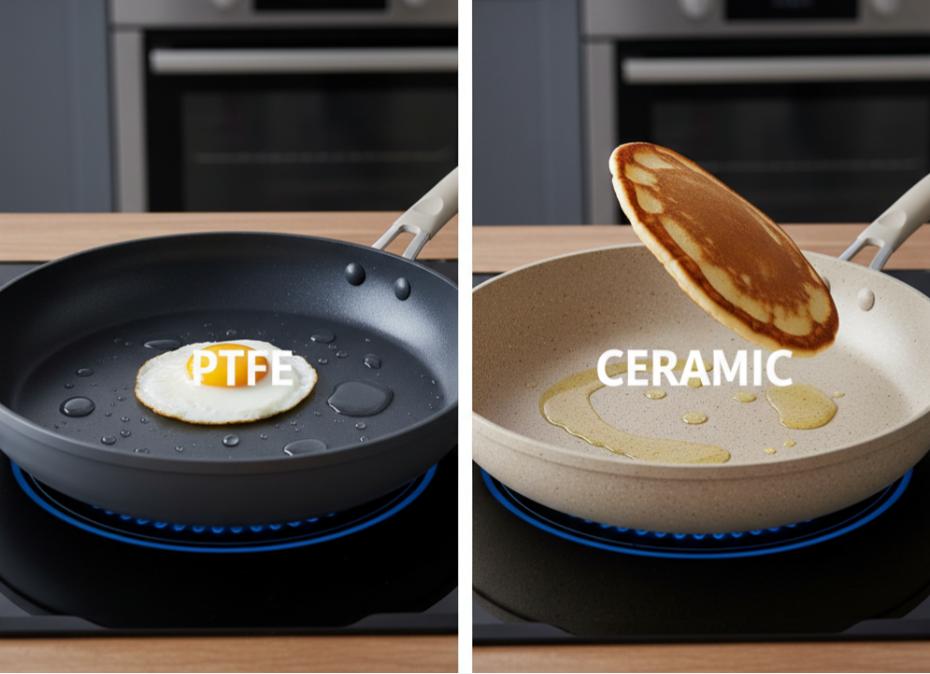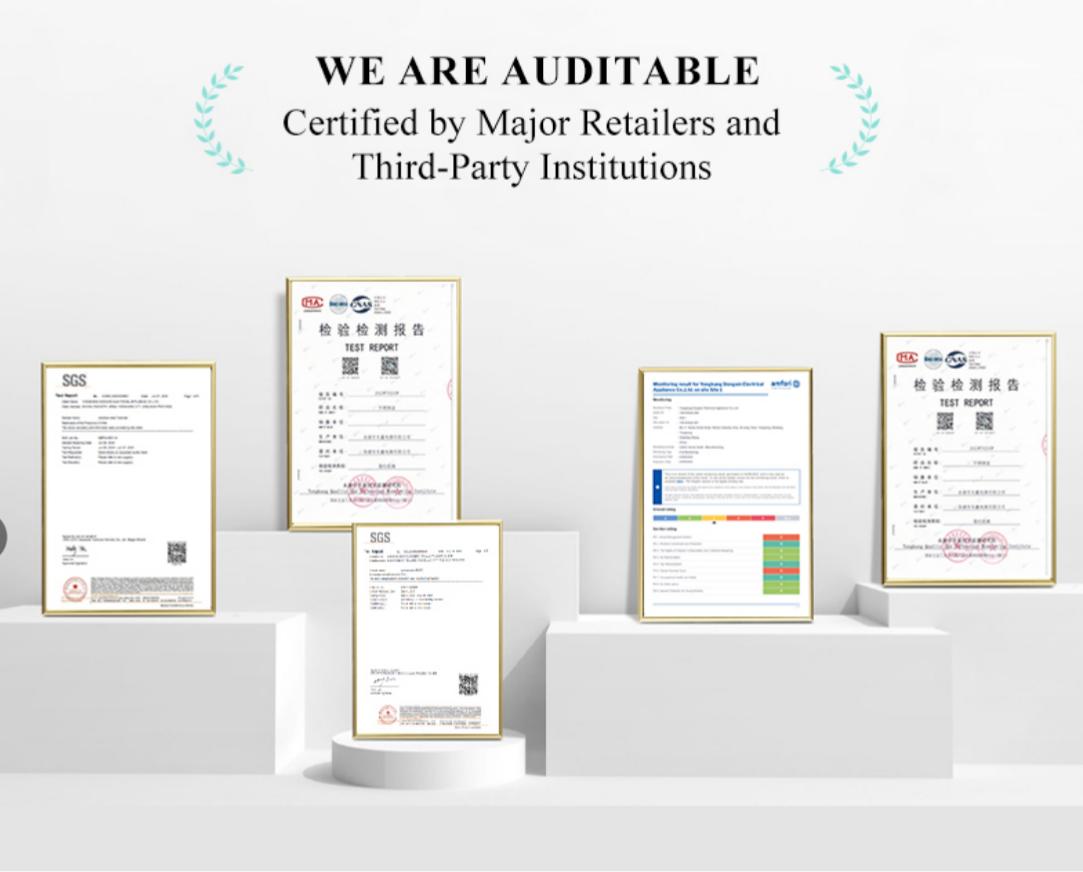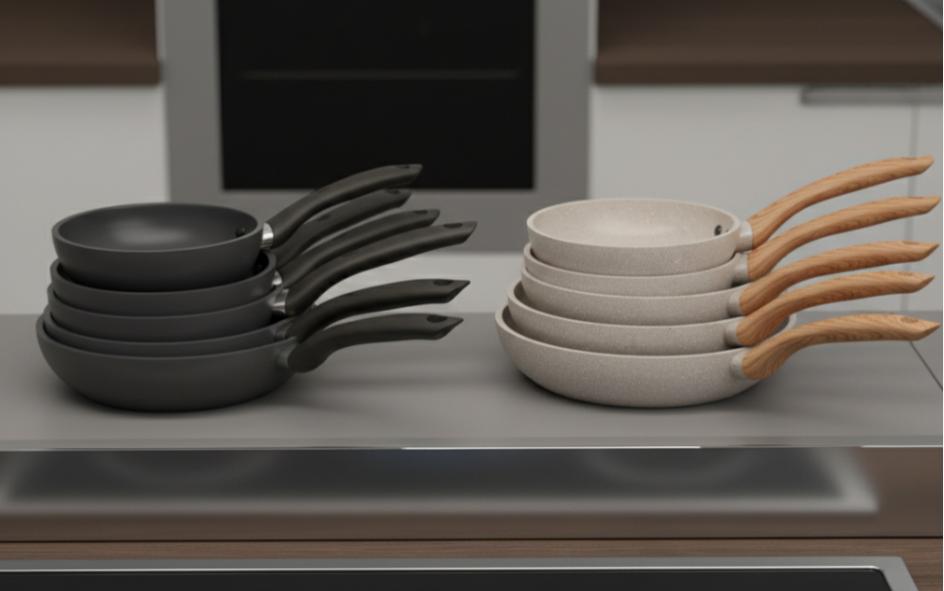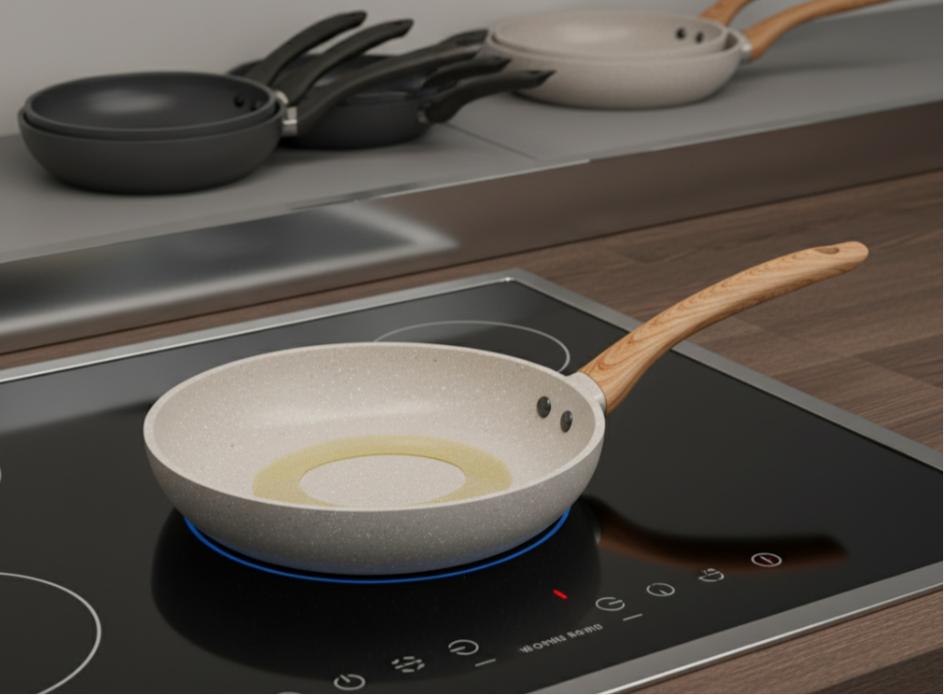Choosing the right non-stick coating feels like a gamble. Make the wrong call, and you're stuck with inventory that won't move. Let's break down the real differences.
PTFE (Teflon) offers superior non-stick performance and durability, especially when reinforced. Ceramic, a sol-gel coating, is PTFE-free, appealing to health-conscious consumers but often has a shorter lifespan. Your choice depends on your target market's priorities: performance versus material concerns.

For over 27 years, I've seen countless trends in kitchenware come and go. But the debate between traditional non-stick and ceramic is more than a trend; it's a fundamental shift that affects your bottom line. Understanding the nuances isn't just about product features—it's about aligning your inventory with consumer demand and future-proofing your business against new regulations. Let's dive deeper into the key questions you should be asking before placing your next big order.
How will tightening PFAS regulations impact my cookware inventory?
You keep hearing about new PFAS rules. This uncertainty can make your current stock feel like a liability, potentially becoming unsellable. Proactive planning is the only way to protect your business.
Tighter PFAS regulations, especially in the EU and US, are increasing demand for PTFE-free options like ceramic. For PTFE-based products, you must ensure they are PFOA-free and have valid compliance reports (e.g., LFGB, FDA) to avoid import issues or delistings from major retailers.

The term "PFAS" has become a major concern for consumers and, therefore, for importers. These "forever chemicals" are under intense scrutiny, and regulations are changing fast. It's crucial to understand what this means for your products.
The Nuance of "PFAS-Free"
Most of the concern revolves around PFOA and PFOS, which were used in the past to make PTFE (the polymer in most non-stick coatings). Today, all reputable manufacturers like us produce PTFE coatings that are completely PFOA-free. The coating material itself, PTFE, is inert and safe for cooking when used correctly. However, the market conversation often simplifies this, creating a huge demand for anything labeled "PFAS-free," which is where ceramic coatings shine.
Your Action Plan for Compliance
To navigate this, you need two things: transparency and documentation.
- Transparency: Clearly label your products. If it's PTFE, state it's PFOA-free. If it's ceramic, highlight its PTFE-free properties.
- Documentation: Never import without up-to-date test reports. We provide full LFGB and FDA compliance documentation for every shipment, ensuring your products clear customs and meet retailer requirements without a hitch. Get these documents locked in before your buying season starts to avoid costly delays.
Should I offer both PTFE and ceramic non-stick lines?
You want to meet market demand, but doubling your product lines increases complexity and inventory costs. You worry about splitting your investment and backing the wrong horse in the long run.
Yes, a dual-portfolio approach is the smartest strategy. It allows you to capture two distinct customer segments: those who prioritize top-tier, long-lasting non-stick performance (PTFE) and those who prioritize "free-from" marketing claims and health-conscious branding (ceramic). This hedges your bets against market shifts.

Relying on a single type of non-stick coating is risky in today's market. Consumer preferences are fragmented. A home chef who watches cooking shows might want the proven release and durability of a high-quality, reinforced PTFE pan. On the other hand, a young family shopping at a health-focused retailer might only consider ceramic options. By not offering both, you're leaving money on the table.
Positioning Each Line for Success
A dual-portfolio strategy isn't just about having two products; it's about smart market positioning. Here is how we guide our partners:
| Coating Type | Target Customer | Key Selling Points | Ideal Retail Channel |
|---|---|---|---|
| Reinforced PTFE | Performance-focused home cooks, foodies. | Unmatched durability, superior non-stick release, long lifespan. | Kitchen specialty stores, high-end department stores, e-commerce. |
| Ceramic | Health-conscious buyers, families, eco-aware consumers. | PFOA/PTFE-free, vibrant color options, perceived "natural" choice. | Supermarkets, mass-market retailers, online wellness blogs. |
This strategy minimizes risk. If regulatory pressures on PTFE increase further, your ceramic line is already established. If consumers grow tired of ceramic's shorter lifespan, your performance-driven PTFE line will capture their business. We can support you with low MOQs on both types, making it easier to test this strategy in your market without a huge upfront investment.
Why is induction compatibility now a must-have for non-stick cookware?
You've noticed more requests for induction-ready pans. Ignoring this trend could mean your cookware is incompatible with a growing number of modern kitchens, shrinking your potential customer base.
Induction cooktops are becoming a global standard for their efficiency and safety, especially in Europe and new-build homes. Cookware that isn't induction-compatible is now seen as outdated and has a much smaller addressable market. It's no longer a premium feature but a baseline expectation.

For years, induction was a niche feature. That has completely changed. The global push for energy efficiency and the sleek design of modern kitchens have made induction cooktops mainstream. From my experience talking to partners in over 50 countries, if your cookware can't work on an induction hob, you're cutting out a huge and growing segment of the market. This is especially true for mid- to high-end product lines, where consumers expect universal compatibility.
The Manufacturing Difference
Making a pan induction-ready isn't just a marketing label. It requires a specific base.
- Standard Pan Base: A simple aluminum body. It's lightweight and heats well on gas or electric, but it won't work on an induction cooktop.
- Induction Pan Base: An aluminum body with a ferromagnetic (e.g., stainless steel) plate bonded to the bottom. This plate is what interacts with the induction hob's magnetic field to generate heat.
As a manufacturer, we've invested heavily in advanced bonding technology to create highly efficient induction bases. To simplify things for our partners, we now recommend standardizing a premium, full-induction base for all mid-range and premium non-stick lines. This streamlines procurement, reduces the number of SKUs you have to manage, and shortens purchase order cycles because you're not debating base specifications on every order. It makes your entire collection more valuable and future-proof.
Conclusion
Navigating the non-stick market comes down to a balanced strategy. Embrace a dual portfolio of PTFE and ceramic, demand compliance documentation, and make induction compatibility your standard for success.